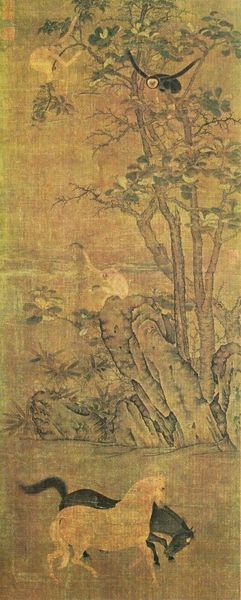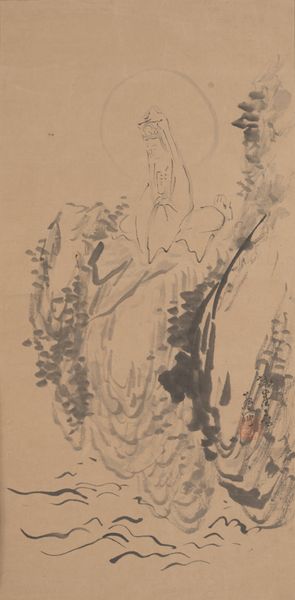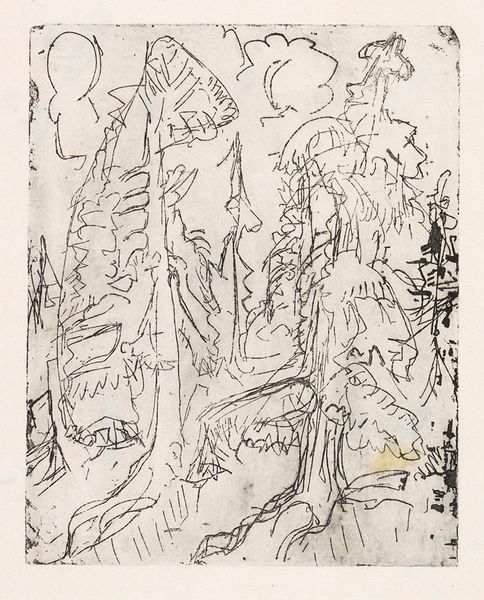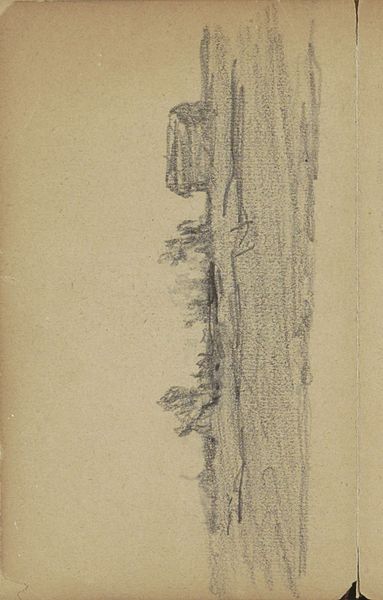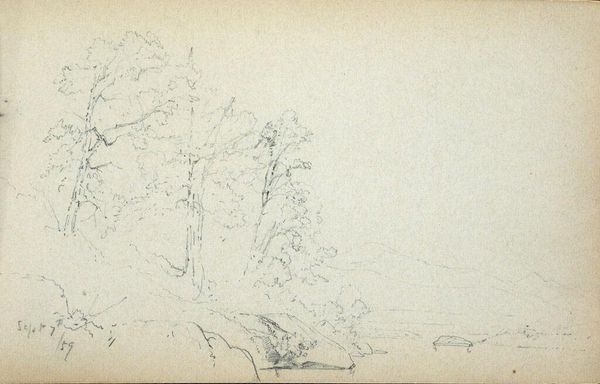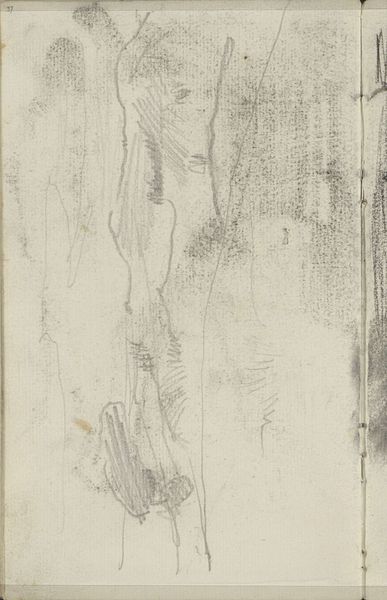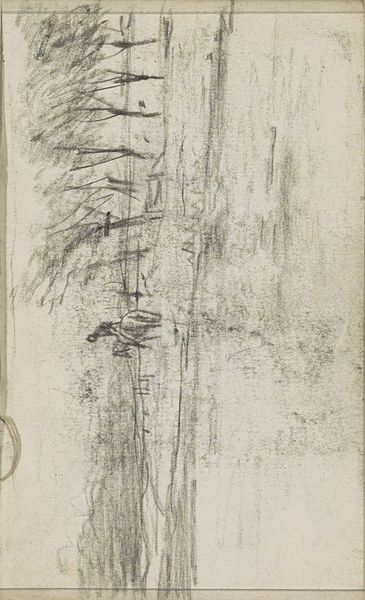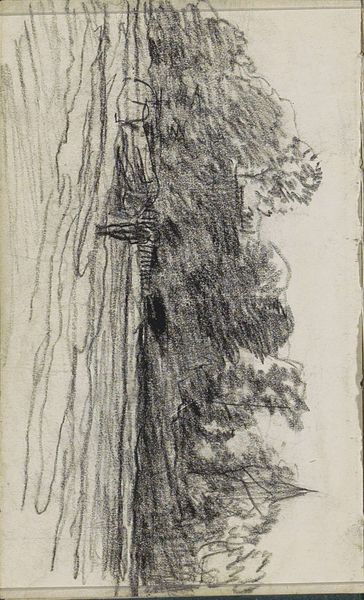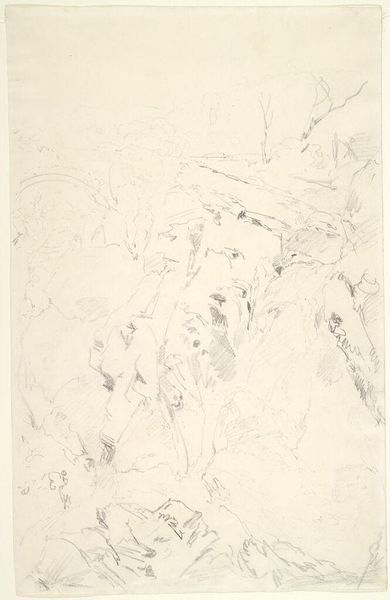
Copyright: Public domain
Curator: My first impression is one of shadowy density, a palpable weight, even. I feel swallowed by that ink, or charcoal. Editor: We are looking at "Wild folk family", a drawing rendered around 1510 by Albrecht Altdorfer. Consider that this work comes to us from the Northern Renaissance, where artists were captivated by both detailed naturalism and dramatic expressive forms. Curator: I can see the appeal for expressive form. It’s like looking at something primordial; that textured layering evokes feelings of deep time. Are we sure they're even people, though? Their forms are so blended into the forest around them! Editor: The rendering definitely blurs the line between human and natural form. What's particularly interesting about Altdorfer’s work within its socio-political context is how it anticipates anxieties about the disruption of natural order. This drawing complicates the rigid categories imposed on human/animal and natural/artificial spheres. Consider the impact on understandings of identity, particularly regarding who gets to lay claim to “humanity.” Curator: And are we intended to read something into this 'wild family’ living in their environment? I think of ecofeminism and that theoretical framework – critiquing the power structures embedded in human's dominion over nature and, analogously, man’s over women. Is it projecting to suggest that maybe Altdorfer’s vision challenges such hierarchies of value? Editor: I appreciate that reading. What interests me further is how landscape – typically deployed as a background element – here comes to dominate, reflecting changing cultural values. This foregrounding challenges established artistic norms of the time, echoing the growing agency of the merchant class who are rising in prominence and demanding, through patronage, more representative subject matter. Altdorfer finds an almost democratic balance among elements. Curator: So it’s like Altdorfer gave more voice to a landscape teeming with 'others'. I now perceive his art less as a vision of dread and more as an illustration of interconnection and interdependence. Editor: I would only add to remember that art is rarely straightforward, and rarely devoid of ambiguities!
Comments
No comments
Be the first to comment and join the conversation on the ultimate creative platform.



